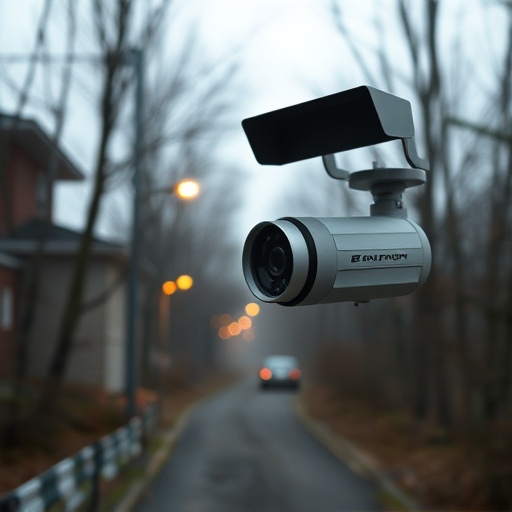Hidden spy cameras, increasingly integrated with advanced artificial intelligence (AI), evade traditional detection methods due to their sophisticated design and motion-activated recording. AI-driven signal scanning offers a revolutionary solution by analyzing data patterns and anomalies from radio frequency (RF) and infrared (IR) signals, enhancing accuracy and efficiency over manual inspections. This technology, leveraging machine learning models and deep neural networks, can uncover even sophisticated spy cameras disguised in homes, offices, or public spaces, while raising critical ethical concerns about privacy and data usage that require robust guidelines to balance security with individual freedoms.
Hidden recording devices pose a significant threat to privacy, often used surreptitiously in various settings. This article delves into innovative signal scanning methods to uncover these clandestine tools. We explore the challenges posed by hidden recording devices and the pivotal role of artificial intelligence (AI) integration in enhancing security. From advanced detection techniques for spy cameras to ethical considerations, we provide insights into the future trends shaping AI-driven security measures. Understanding these technologies is crucial in safeguarding personal and public spaces from unwanted surveillance.
- Understanding Hidden Recording Devices and Their Challenges
- The Role of Artificial Intelligence in Signal Scanning
- Advanced Techniques for Detecting Spy Cameras
- Ethical Considerations and Future Trends in AI-Integrated Security
Understanding Hidden Recording Devices and Their Challenges
Hidden recording devices, also known as spy cameras, have evolved significantly with the integration of artificial intelligence (AI). These miniature and often discreet surveillance tools present unique challenges for detection. Modern AI algorithms enable these devices to adapt and become more sophisticated in evading discovery, making them harder to identify for untrained eyes. From facial recognition evasion to motion-activated recording modes, spy cameras are becoming increasingly advanced.
The challenges arise when trying to locate these hidden devices in various environments, be it homes, offices, or public spaces. Traditional scanning methods often rely on manual inspections and visual cues, which can be time-consuming and prone to human error. AI-driven signal scanning methods offer a promising solution by leveraging machine learning capabilities to analyze patterns and anomalies in data streams, enabling faster and more accurate detection of hidden recording devices.
The Role of Artificial Intelligence in Signal Scanning
The integration of artificial intelligence (AI) into signal scanning techniques has revolutionized hidden recording device detection, particularly in the context of spy cameras. AI algorithms are adept at analyzing vast amounts of data and identifying patterns, making them invaluable for uncovering concealed surveillance equipment. By employing machine learning models, these systems can learn to recognize the unique signatures or anomalies associated with spy cameras’ signals, whether they are wired or wireless. This technology scans through various signal types, including radio frequency (RF) and infrared (IR), enabling more comprehensive coverage.
AI-driven signal scanning offers enhanced accuracy and efficiency compared to traditional methods. It can continuously monitor environments, adapt to new signal patterns, and even predict potential hidden camera locations by learning from historical data. The ability to process real-time data ensures that any suspicious signals are promptly investigated, making it a powerful tool for privacy protection, security enhancements, and counter-surveillance operations.
Advanced Techniques for Detecting Spy Cameras
In the ever-evolving landscape of security, Advanced Techniques for Detecting Spy Cameras have become paramount, especially with the integration of Spy Camera Artificial Intelligence (AI). AI algorithms now play a pivotal role in identifying and neutralizing hidden recording devices, offering unprecedented levels of precision and efficiency. Machine learning models are trained on vast datasets to recognize subtle anomalies, from unusual light patterns to irregular reflections, that may indicate the presence of covert cameras.
These advanced methods leverage deep neural networks and computer vision technologies to scan environments with remarkable acuity. By continuously analyzing feed data in real-time, AI systems can detect even the most sophisticated spy cameras, which often employ advanced disguises or operate at infrared wavelengths. This cutting-edge approach ensures that personal spaces remain private and secure, providing a robust defense against potential privacy breaches.
Ethical Considerations and Future Trends in AI-Integrated Security
The integration of artificial intelligence (AI) into security systems, particularly for hidden recording device signal scanning, raises important ethical considerations. As AI algorithms become more sophisticated in detecting and identifying individuals within video feeds, privacy becomes a significant concern. The ability to track and analyze behaviors with such precision may lead to potential abuses of power if not properly regulated. It’s crucial to establish clear guidelines on data collection, storage, and usage to ensure that the rights of citizens are protected.
Looking ahead, the future of AI-integrated security promises both advancements and challenges. The development of more robust Spy Camera Artificial Intelligence can enhance surveillance capabilities, making it easier to identify suspicious activities or hidden devices. However, this trend also necessitates a reevaluation of existing legal frameworks and the implementation of innovative solutions that balance security with individual freedoms. As technology evolves, staying ahead of ethical dilemmas will be vital to maintaining public trust in AI-driven security measures.
Hidden recording devices pose significant challenges, but advancements in artificial intelligence (AI) integration are revolutionizing signal scanning methods. Techniques like advanced image recognition and data analytics enable more effective detection of spy cameras, enhancing security measures. As AI continues to evolve, ethical considerations must be forefront, ensuring responsible use of these powerful tools for a safer digital landscape.
